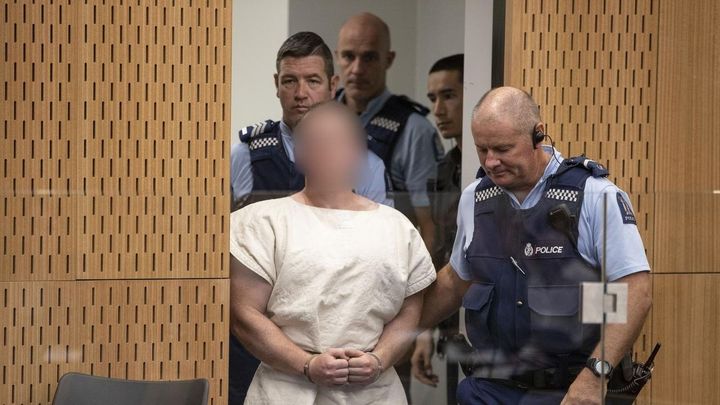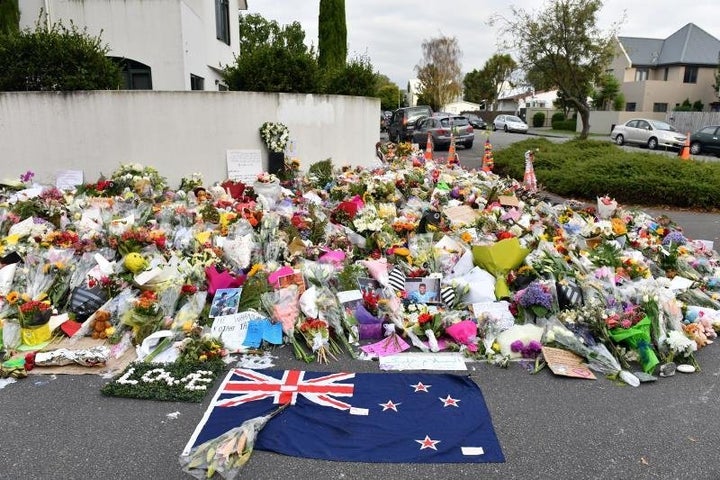On the first day of his murder trial in April 2012, Anders Breivik raised his fist in a white power salute, attacked the legitimacy of Norway’s courts and promoted the violent extremist conspiracy theories that led him to murder 77 people just months earlier, most of them teenagers at a summer camp. It was clear that he intended to use the courtroom as a stage.
The international focus on Breivik’s terrorist attack meant that he had a large audience. Parts of the trial were televised. Reporters from around the world filled the Oslo courtroom and tweeted updates, sometimes repeating his groundless claims without context. During the closing statements, he gave a rambling 45-minute speech that was later celebrated and reprinted on white nationalist and neo-Nazi websites.
Brenton Tarrant, who is accused of killing 50 people and wounding dozens of others in last month’s anti-Muslim attack in New Zealand, also apparently wants to use the courtroom as his soapbox. He has already made white supremacist gestures in court and intends to represent himself; his manifesto cites Breivik as an inspiration. He appeared in court on Friday.
New Zealand’s justice system now faces the difficult question of how to properly try Tarrant and ensure that justice is served while grappling with an unprecedented national tragedy, global media attention and a defendant who appears set on derailing the proceedings.

Putting Extremists On Trial
One of the biggest challenges in high-profile terrorism cases is maintaining focus on the crimes at hand rather than extremist ideologies the defendants want to broadcast, according to attorneys who have worked on such trials.
“The major concern is keeping the case within the confines of the actual charges, as opposed to providing him a platform to espouse his propaganda,” said Jason Wright, a lawyer who defended Khalid Sheikh Mohammed, the architect of the September 11 terrorist attacks.
“The actual issues of guilt or innocence for the death of 50 people and the injury of so many others ― that’s what’s relevant. That’s what should be heard by the court,” Wright said.
In Norway, prosecutors spent months poring over every detail of the Breivik case. They rejected the idea that his obvious guilt should mean a speedy trial and went to great lengths to establish how each murder took place. Lead prosecutor Svein Holden reasoned that if the proceedings glossed over the deaths or didn’t challenge Breivik’s false claims, they would do a disservice to victims and could fail to debunk conspiracy theories.
““It’s important to show that we are able to treat people that have done horrific things in a human fashion.””
- Svein Holden, lead prosecutor in Anders Breivik's trial
Although Norway’s court banned audio and video recordings for most of the trial, it allowed in media to report what was said in the courtroom. Even if Breivik was intent on undermining the legal process with inflammatory rhetoric and smirks at mentions of his crimes, the prosecutors maintained that the court should largely treat him like any other defendant in a murder case and that it was in the public’s interest to know the rule of law was being upheld. Holden even shook hands with Breivik at the beginning of the trial.
“It’s important to show that we are able to treat people that have done horrific things in a human fashion,” Holden said. “To not just be filled with revenge, but to do it in a professional manner.”
New Zealand authorities have vowed to prevent the accused shooter from using the Christchurch trial as a platform. Tarrant’s face has been blurred in courtroom footage. Some of New Zealand’s media outlets have limited mention of his name, and Prime Minister Jacinda Ardern vowed never to use it at all. Meanwhile, government censors criminalized the possession or transfer of his manifesto, with punishment of up to 14 years in prison.
Under New Zealand law, the court can appoint a standby counsel for Tarrant if he continues to insist he represent himself, according to the New Zealand Law Society. The court can also remove him from the courtroom if he becomes disruptive and prevent him from speaking to witnesses.
But Breivik’s trial showed that even with the best planning, some things are beyond the court’s control. A man with mental illness set himself on fire outside the courthouse. A German woman with a criminal history of disturbing the peace tried to enter the courtroom in support of Breivik but was denied and subsequently deported. The defense counsel received anonymous threats, and 40,000 demonstrators gathered to sing a folk song that Breivik disliked. Inside the courtroom, a victim’s brother hurled a shoe at Breivik and told him to go to hell.

Delivering Justice For The Victims
The easiest way to avoid having the New Zealand trial become a megaphone for extremism may be for the case to focus as much on the victims as the perpetrator. The goal would be to strike a balance between exposing the motives and ideology behind the attack and showing the consequences it had on innocent people.
“No amount of years, decades or centuries of a sentence is going to bring back loved ones or take away the pain for the family members,” Wright said. “The way to provide perhaps some measure of justice is to provide the opportunity for family members to speak to their pain and share their humanity.”
In Breivik’s trial, the court heard days of testimony from survivors and relatives of those killed. Parents who lost their children and teenagers who saw friends murdered often sat in the same room as the man who killed their loved ones. Viljar Hannsen, who lost sight in his right eye from a bullet that was still lodged in his brain, joked that at least his lack of vision meant he couldn’t see Breivik’s side of the courtroom. Each testimony functioned as a negation of the fear and hateful ideology that Breivik hoped to instill.
The victims’ testimony and consultations were important not only because they gave a clearer picture of what happened in the attack but also because they allowed families and survivors to know that the system could treat each individual hurt or killed in the attack with appropriate respect, Holden said.
New Zealand has so far responded to the Christchurch attack by condemning far-right extremism and reaching out to the country’s Muslim community, and the government has announced changes to the nation’s gun laws. But the trial is likely to be an even bigger test of how it handles such extremism than any other event since the killings ― and the first in which Tarrant may be able to inflict more harm.
“It’s important as a society to show the world how you meet persons and actions like this,” Holden said. “It shows that society isn’t like the accused.”
